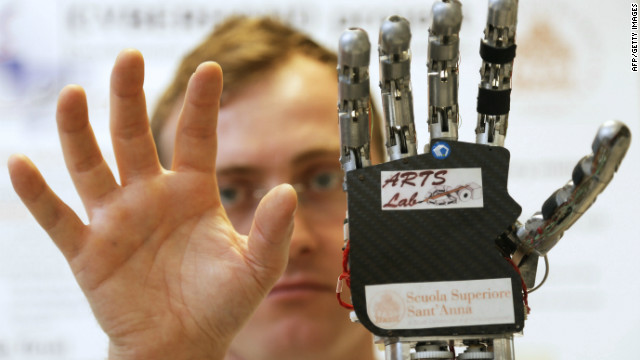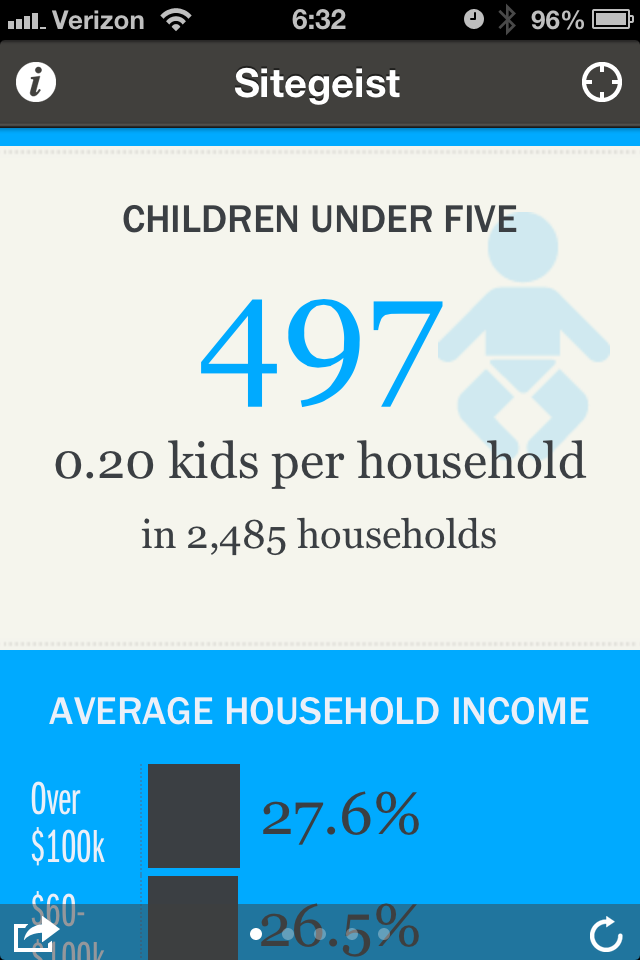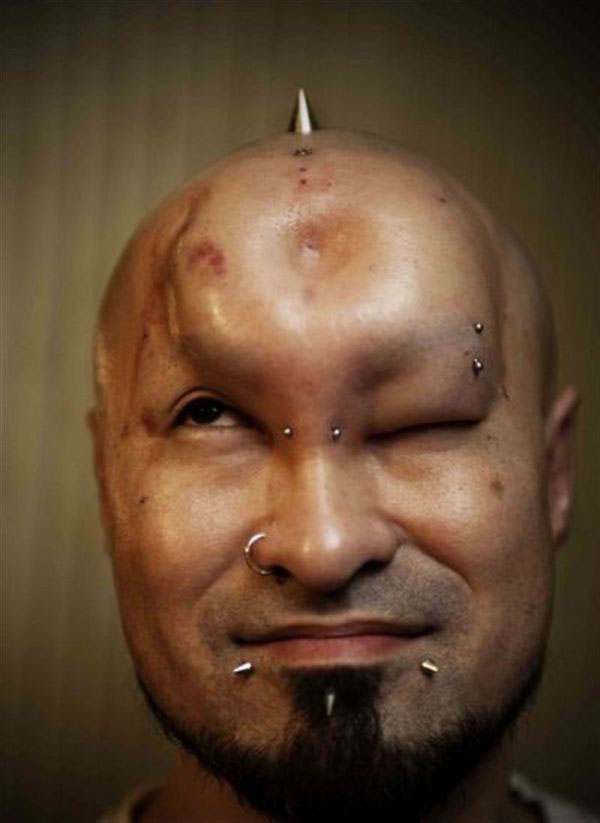
A Cybernetic Organism or Cyborg is a being with both organic and cybernetic parts. This is an organism that has abilities that have been enchanced, because of technology. Not only in your mammals can there be a cyborg. But also in networks like your, road systems, corporations and government.

There are cyborgs all around us. Anything or anyone that uses a mechanical parts to enhance the body's natural mechanisms.
The beginning of Cyborg creation began when HCI (human-computer interaction) began. The word Cyborg is a noun and was first used in 1960, it is a blend of the first elements cybernetic (1951, back-formation from cybernetics. Greek kybernetikos meant "good at steering.") and organism .
Cyborgs exist; 10% of the U.S. population are estimated to be cyborgs in the technical sense, including people with electronic pacemakers, artificial joints, drug implant systems, implanted corneal lenses, and artificial skin. You have your contact lenses, hearing aids, and intraocular lenses. A greater percentage are in occupations that make them into metaphoric cyborgs (computer keyboarder joined in a cybernetic circuit with the screen, the neurosurgeon guided by fiber optic microscopy during an operation, and the teen gameplayer in the local videogame arcarde.)
Cyborg can run into the class of many things:


Cyborgology
Bionics/Biomimiory
Biomedical Engineering
Brain-Computer Interface
Cybernetics
Distributed Cognition
Genetic Engineering
Human Ecosystem
Human Enhancement
Intelligence Amplification
Whole brain emulation; Mind uploading & Mind transfer
The process of transferring or copying a conscious mind from a brain to a non-biological substrate by scanning and mapping a biological brain in detail and copying its state into a computer system or another computational device.
The simulated mind is assumed to be part of a virtual reality simulated world, supported by an anatomic 3D body simulation model. Alternatively, the simulated mind could be assumed to reside in a computer inside (or connected to) a humanoid robot or a biological body, replacing its brain.
Among futurists and within the transhumanist movement it is an important proposed life extension technology.
Mainstream research and development are being done in relevant areas including development of faster super computers, virtual reality, brain-computer interfaces, animal brain mapping and simulation, connectomics (a neural imaging and histological technique to increase the speed, efficiency, and resolution of maps of the multitude of neural connections in a nervous system.) and information extraction from dynamically functioning brains.
There Are Theory Benefits of Whole Brain Emulation
Immortality
In theory, if the information and processes of the mind can be disassociated from the biological body, they are no longer tied to the individual limits and lifespan of that body.
Speed Up
A computer-based intelligence such as an upload could potentially think much faster than a human even if it were no more intelligent. Human neurons exchange electrochemical signals with a maximum speed of about 150 meters per second.
A massively parallel implementation would require separate computational units for each of the eighty-six billion neurons and each of the eighty-six trillion synapses.This would need an enormously large computer or artificial neural network in comparison with today's super-computers.
Space Travel
Interstellar space travel would allow immortal beings to travel the cosmos without suffering from extreme acceleration. A whole society of uploads can be emulated by a computer on a very small spaceship, similar to a space probe, that would consume much less fuel and may accelerate much more than space travels for biological humans. The uploads would have control of the ship and would be able to make decisions about the crafts voyage in real time, independent of signals from Earth, that might eventually take months or years to reach the craft as it journeys out into the cosmos. Because a virtual conscious can be set into a state of hibernation, or slowed down, the virtual minds need not experience the boredom of hundreds if not thousands of years of travel. Instead they would only awake when on board computers detected that the craft had arrived at its destination.
Another possibility for travel would be wireless transmission of a person's brain model between computers on already inhabited locations. Such travel would require only the energy to transmit enough powerful signals suffently long time so that they reach the target destination.
The travelling time would be a sum of the wave propagation delay (this depends on the distance) and the data transmission delay (on the possible bit rate, this depends on the distance and transmission power); both could constitute several years for inter-stellar travelling. The travelers experienced time from transmitter to receiver would be instantaneous or to be simple instantly.
The process of transferring or copying a conscious mind from a brain to a non-biological substrate by scanning and mapping a biological brain in detail and copying its state into a computer system or another computational device.
The simulated mind is assumed to be part of a virtual reality simulated world, supported by an anatomic 3D body simulation model. Alternatively, the simulated mind could be assumed to reside in a computer inside (or connected to) a humanoid robot or a biological body, replacing its brain.
Among futurists and within the transhumanist movement it is an important proposed life extension technology.
Mainstream research and development are being done in relevant areas including development of faster super computers, virtual reality, brain-computer interfaces, animal brain mapping and simulation, connectomics (a neural imaging and histological technique to increase the speed, efficiency, and resolution of maps of the multitude of neural connections in a nervous system.) and information extraction from dynamically functioning brains.
There Are Theory Benefits of Whole Brain Emulation
Immortality
In theory, if the information and processes of the mind can be disassociated from the biological body, they are no longer tied to the individual limits and lifespan of that body.
Speed Up
A computer-based intelligence such as an upload could potentially think much faster than a human even if it were no more intelligent. Human neurons exchange electrochemical signals with a maximum speed of about 150 meters per second.
A massively parallel implementation would require separate computational units for each of the eighty-six billion neurons and each of the eighty-six trillion synapses.This would need an enormously large computer or artificial neural network in comparison with today's super-computers.
Space Travel
Interstellar space travel would allow immortal beings to travel the cosmos without suffering from extreme acceleration. A whole society of uploads can be emulated by a computer on a very small spaceship, similar to a space probe, that would consume much less fuel and may accelerate much more than space travels for biological humans. The uploads would have control of the ship and would be able to make decisions about the crafts voyage in real time, independent of signals from Earth, that might eventually take months or years to reach the craft as it journeys out into the cosmos. Because a virtual conscious can be set into a state of hibernation, or slowed down, the virtual minds need not experience the boredom of hundreds if not thousands of years of travel. Instead they would only awake when on board computers detected that the craft had arrived at its destination.
Another possibility for travel would be wireless transmission of a person's brain model between computers on already inhabited locations. Such travel would require only the energy to transmit enough powerful signals suffently long time so that they reach the target destination.
The travelling time would be a sum of the wave propagation delay (this depends on the distance) and the data transmission delay (on the possible bit rate, this depends on the distance and transmission power); both could constitute several years for inter-stellar travelling. The travelers experienced time from transmitter to receiver would be instantaneous or to be simple instantly.
Theory
Cyborg Theory
Postgenderism
Cyborg Anthropology

A cyborg anthropologist looks at how humans and non human objects interact with each other, and how that changes culture. Cyborg anthropology is recent it launched at the Annual Meetings of the American Anthropological Association (AAA) in 1993. Within the AAA cyborg anthropology is associated with the Committee for the Anthropology of Science, Technology and Computing (CASTAC).
Politics
Cognitive Liberty
Cyborg Feminism
Extropianism
Morphological Freedom
Singularitarianism
Techno-Progressivism
Transhuman

Transhumanism, abbreviated as H+ or h+, is an international intellectual and cultural movement that affirms the possibility and desirability of fundamentally transforming the human condition by developing and making widely available technologies to eliminate aging and to greatly enhance human intellectual, physical, and psychological capacities. Transhumanist study the benefits and dangers of new technologies that could overcome fundamental human limitations, they also study the ethical matters involved in developing and using such technologies.
They predict that human beings may eventually be able to transform themselves into beings with such greatly expanded abilities as to merit the label "posthuman".
Postgenderism
Cyborg Anthropology

A cyborg anthropologist looks at how humans and non human objects interact with each other, and how that changes culture. Cyborg anthropology is recent it launched at the Annual Meetings of the American Anthropological Association (AAA) in 1993. Within the AAA cyborg anthropology is associated with the Committee for the Anthropology of Science, Technology and Computing (CASTAC).
Politics
Cognitive Liberty
Cyborg Feminism
Extropianism
Morphological Freedom
Singularitarianism
Techno-Progressivism
Transhuman

Transhumanism, abbreviated as H+ or h+, is an international intellectual and cultural movement that affirms the possibility and desirability of fundamentally transforming the human condition by developing and making widely available technologies to eliminate aging and to greatly enhance human intellectual, physical, and psychological capacities. Transhumanist study the benefits and dangers of new technologies that could overcome fundamental human limitations, they also study the ethical matters involved in developing and using such technologies.
They predict that human beings may eventually be able to transform themselves into beings with such greatly expanded abilities as to merit the label "posthuman".






























